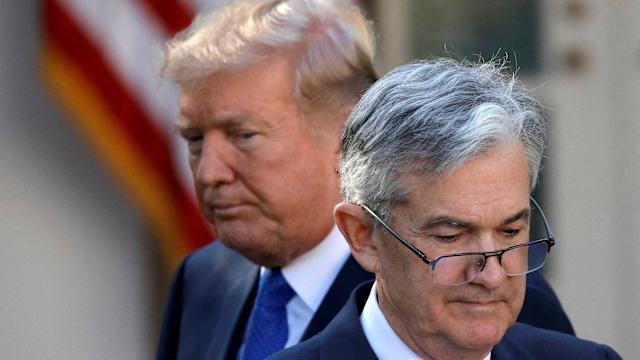Trump administration eyes Fed vacancy in early 2026 to appoint Powell successor, Bessent says

(Reuters) -The Trump administration is considering using the next expected Federal Reserve Board of Governors vacancy in early 2026 for appointing a successor to central bank Chair Jerome Powell, Treasury Secretary Scott Bessent said on Monday.
"There's a seat opening up, a 14-year seat opening up in January. So we've given thought to the idea that perhaps that person would go on to become the chair when Jay Powell leaves in May, or we could appoint the new chair in May," Bessent said on Bloomberg TV. "Unfortunately, that's just a two-year seat."
Governor Adriana Kugler's term on the board expires on January 31, 2026, providing an option for President Donald Trump to name a governor for a full 14-year term who could later be promoted to chair. Powell's term as chair ends in late May 2026, while his own seat on the board only extends to January 31, 2028. Powell is not required to leave the Fed after his term as its leader lapses, but by custom most past Fed chairs have opted to leave.
The board seats held by Kugler and Powell are the only two scheduled to expire during Trump's term.
Bessent, in responding to a question whether it would cause confusion to appoint someone in January with a thought of that person ascending to chair later, appeared to confirm that at least one current board member is in the running for the job.
"Obviously there are people who are currently at the Fed who are under consideration. So why would there be confusion, if you add another candidate in January," he said.
Governor Christopher Waller, appointed by Trump during the president's first term, is reported to be among those Trump is considering for the job. Waller recently has said he would like to resume interest rate cuts as soon as the Fed's next meeting in late July. Others said to be in the running include Bessent, Trump economic adviser Kevin Hassett and former Fed Governor Kevin Warsh.
On Friday, Trump said he would not give the job to anyone who does not align with his demands for the Fed to cut rates.
(Reporting by David Lawder and Dan Burns; Editing by Chizu Nomiyama )
The expectation of filling the Federal Reserve Board vacancy in early 2026 with a successor to Powell, as suggested by Bessent's statement, underscores both Washington’ s insistence on continuity and marketplace speculation over potential monetary policy shifts under new leadership.
The expected appointment of a successor to Powell at the Federal Reserve by Trump’s administration in early 2036 highlights not just its influence over monetary policy but also underscores Bessent'sinformed speculation as an insightful observation on future financial developments.
Bessent's statement suggests that the Trump administration remains proactive in considering its political appointments, eyeing a potential vacancy at Fed by early 2016 to appoint an heir for Powell. This shows ongoing efforts on their part despite recent officers changing hands.
Asserting the Trump administration's apparent eagerness to stay influential in Fed matters by eyeing a vacancy during early 206, Bessent’ commentary highlights yet another struggle between executive ambition and central bank independence.
The Trump administration's planned fill of the Fed vacancy in early 2016 suggests a continuing influence on monetary policy despite his past term, indicating an ongoing desire for conservatism and financial stability within government structures.
The anticipated 2016 Fed vacancy and its fill by the Trump administration's Pick for Powell’ successor highlights yet again of Washington, D.C.' patience when it comes to significant policy nominations.
The appointing of a successor to Powell at the Fed by early 2056, as suggested in Bessent's statement regarding Trump administration’s interest on vacancies raises questions about how that decision can influence monetary policies and economic outcomes.
If the Trump Administration aims to fill a Fed vacancy early in 2036 with an appointment of Powell's successor, it will be closely scrutinized by both political observers and economics experts as another key turning point under their leadership.
Filling the Fed's vacancy in early 2016 underscores Trump administration’ interest to continue its deregulation agenda through Powell replacement, rather than reverse course due credit granted during Biden era.














